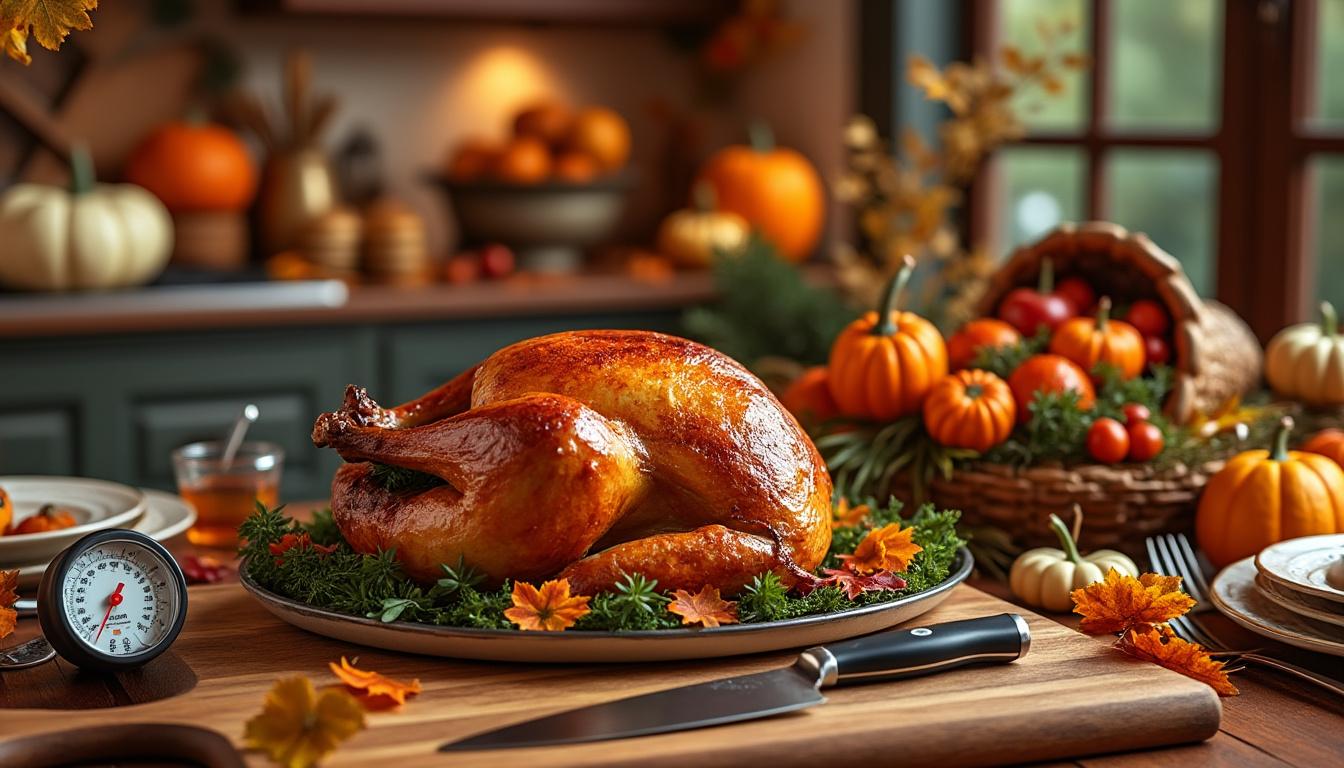Thanksgiving ranks among the most cherished holidays, bringing families together over hearty feasts. Yet, each year, the occasion also sees a rise in kitchen mishaps, often involving turkey preparation. Navigating these culinary challenges with precision is essential not only for delivering a memorable meal but for ensuring the safety of all attendees. This guide emphasizes five critical cooking techniques rooted in expert advice and trusted brands like Butterball, Pillsbury, and Reynolds Wrap, aimed at preventing foodborne illness and kitchen accidents. By implementing these strategies, hosts can secure a worry-free, festive environment where gratitude and taste reign supreme.
Mastering Turkey Defrosting for Food Safety
Improper thawing of the turkey stands as a foremost mistake, directly affecting food safety and quality. The USDA warns against thawing poultry on kitchen counters due to the rapid bacterial growth risk at room temperature. Instead, three recommended methods enhance safety and maintain flavor:
- Refrigerator thawing: Allow 24 hours per 4-5 pounds of turkey, ensuring a consistent, safe cold environment.
- Cold water thawing: Seal the turkey in a watertight bag and submerge in cold water, changing water every 30 minutes.
- Microwave thawing: Utilize microwave settings per manufacturer instructions for quicker preparation.
Brands like Butterball provide clear thawing guidance with precise timing charts, reducing guesswork. Adhering to these guidelines is foundational for a safe Thanksgiving feast.
| Thawing Method | Time Required | Safety Notes |
|---|---|---|
| Refrigerator | 24 hours per 4-5 lbs | Maintains safe temperature, minimal risk |
| Cold Water | 30 minutes per pound | Water must be changed regularly |
| Microwave | Varies by size and microwave power | Cook immediately after thawing |
Ensuring Proper Cooking Temperatures With Precision Tools
Cooking Turkey safely demands reaching and maintaining optimal internal temperatures to eliminate harmful bacteria. The magic number set by food safety authorities stands at 165°F (74°C) in the thickest parts. This can be precisely monitored with digital meat thermometers, preferred for rapid and accurate readings.
- Insert thermometer in the thickest thigh without touching bone.
- Use Reynolds Wrap to tent the turkey if the skin gets overly browned before the interior finishes cooking.
- Rest the turkey post-cooking for at least 20 minutes to allow juices redistribution.
Incorporating trusted kitchen brands such as Pillsbury for cooking supplies and Reynolds Wrap for covering enhances cooking efficiency while ensuring safety compliance.
| Turkey Part | Safe Internal Temp. (°F) | Safe Internal Temp. (°C) |
|---|---|---|
| Thigh | 165 | 74 |
| Breast | 165 | 74 |
| Stuffing (if applicable) | 165 | 74 |
Maintaining Kitchen Fire Safety During Thanksgiving Cooking
The hustle of holiday meal preparation can increase fire risks, especially with multiple active cooking stations. Adhering to basic fire prevention techniques safeguards both home and family.
- Keep stovetops clear of flammable items such as French’s seasoning containers and kitchen towels.
- Practice caution when deep-frying turkeys; consider safer alternatives like oven roasting using Green Giant vegetables to complement the meal.
- Have a fire extinguisher accessible and understand its operation before beginning cooking.
Brands like Kraft and Hellmann’s provide recipe ideas that minimize complex frying or open flame usage, contributing to safer culinary experiences.
| Fire Safety Practice | Reason |
|---|---|
| Clearing cooking area | Reduces fire hazards from combustibles |
| Using oven roasting over deep-frying | Less risk of oil fires and burns |
| Fire extinguisher ready | Immediate response capability in emergencies |
Handling Leftovers Safely to Prevent Foodborne Illness
Proper storage of leftover turkey and accompanying dishes is critical to prevent bacterial growth beyond safe limits. The consensus, supported by the USDA, sets a window of two hours for refrigeration after serving.
- Use shallow airtight containers to cool leftovers quickly.
- Label containers with dates to keep track of storage duration efficiently.
- Consume leftovers within four days or freeze up to four months for optimal quality, including Pillsbury baked goods and Ocean Spray cranberry sauces.
Utilizing proper storage options from Reynolds Wrap and mindful food management strategies prevents waste and health issues.
| Leftover Item | Recommended Storage Duration | Storage Method |
|---|---|---|
| Cooked turkey | 4 days refrigerated, 4 months frozen | Airtight containers or wrapped with Reynolds Wrap |
| Stuffing | 4 days refrigerated | Airtight containers |
| Side dishes (e.g., Green Giant vegetables) | 4 days refrigerated | Airtight containers |
Choosing Reliable Ingredients and Brands for a Stress-Free Feast
Selecting trusted brands can simplify preparation while elevating the meal’s safety and flavor profiles. Incorporating names such as Butterball for premium turkeys, Pillsbury for baked essentials, and Hellmann’s for dressings ensures product consistency and adherence to food safety standards.
- Opt for Butterball turkeys with verified safety certifications.
- Use Pillsbury pie crusts and dough for reliable baking results.
- Choose Hellmann’s mayonnaise and Kraft cheeses to add trusted flavor touches.
- Integrate Green Giant vegetables and Ocean Spray cranberry products for nutritional balance.
- Utilize Reynolds Wrap aluminum foil for efficient cooking and storage.
- Employ Stovetop stuffing to expedite meal preparation with consistent taste.
Combining these brands reduces last-minute complications and supports a seamless holiday cooking experience, allowing hosts to focus on creating meaningful connections around the table.
Frequently Asked Questions About Safe Thanksgiving Cooking
- How long can a thawed turkey remain in the refrigerator? Up to 3-4 days before cooking, keeping it properly refrigerated.
- Is it safe to stuff the turkey before cooking? Yes, if the stuffing reaches an internal temperature of 165°F to eliminate bacteria.
- Can leftovers be refrozen after refrigeration? Yes, provided they were stored within two hours of cooking and have not been left out.
- What is the best way to prevent turkey dryness? Tent with Reynolds Wrap during roasting and rest after cooking to retain juices.
- How can I minimize fire risks when cooking multiple dishes? Maintain awareness of cooking areas, avoid overcrowding stoves, and keep fire suppression tools handy.

